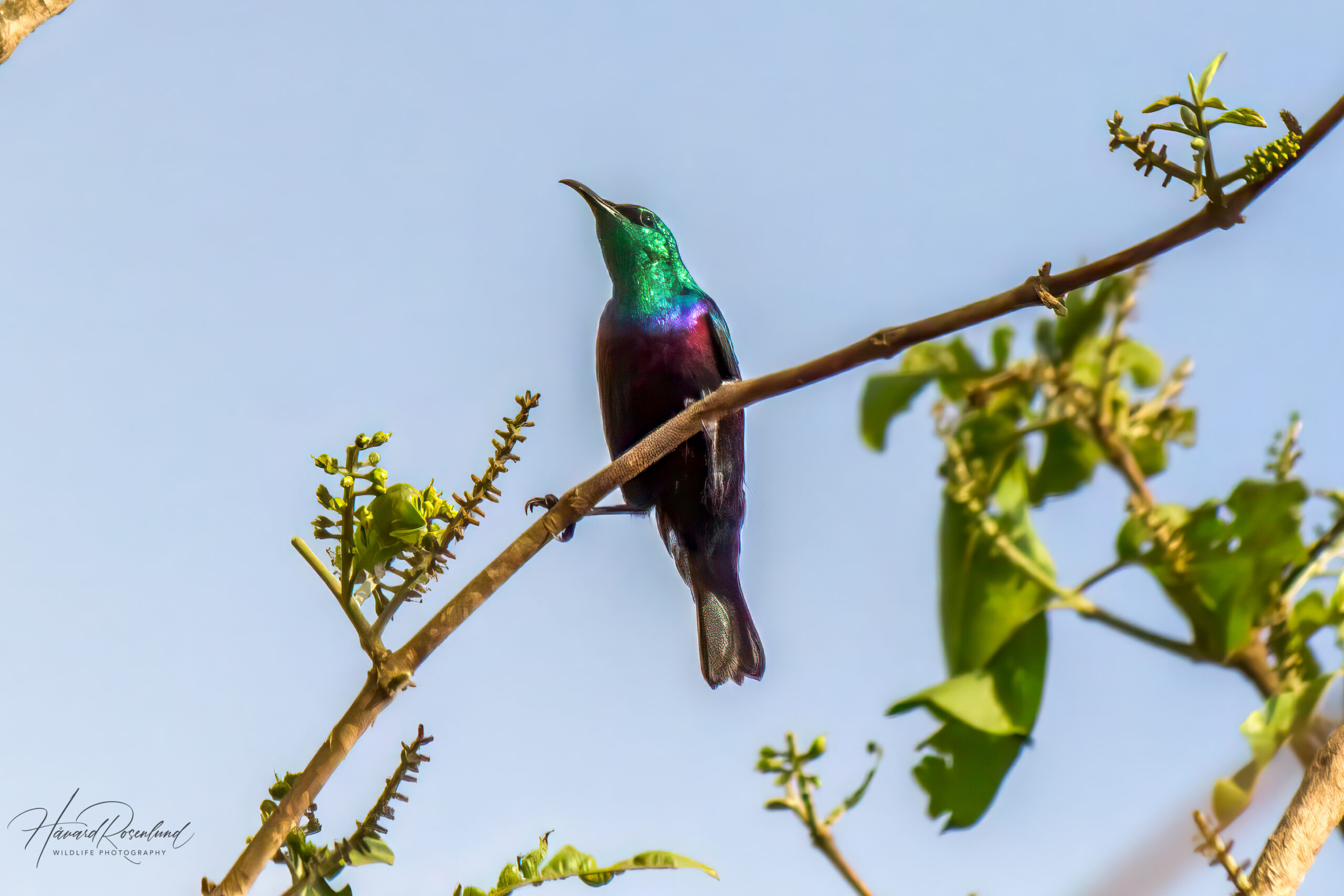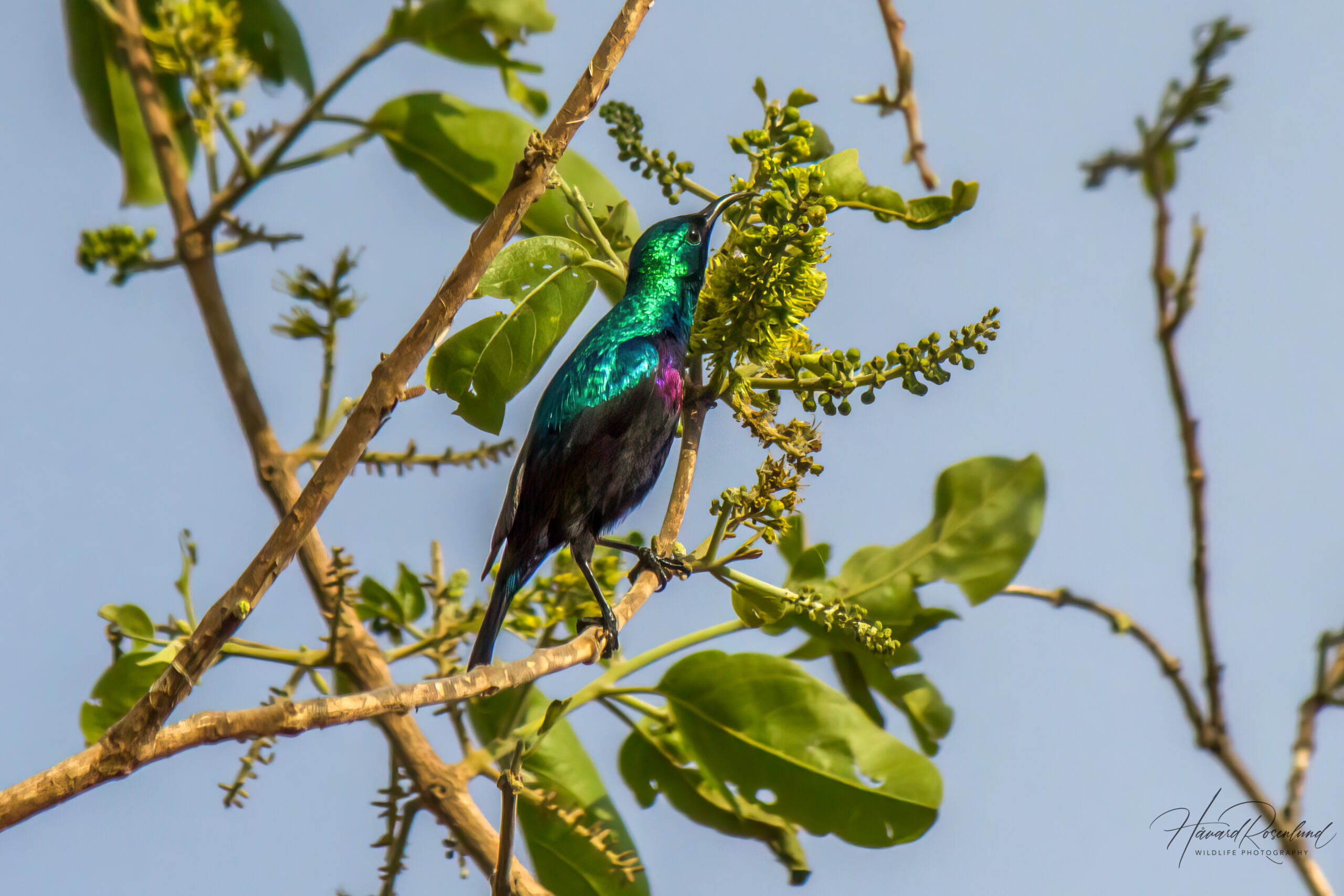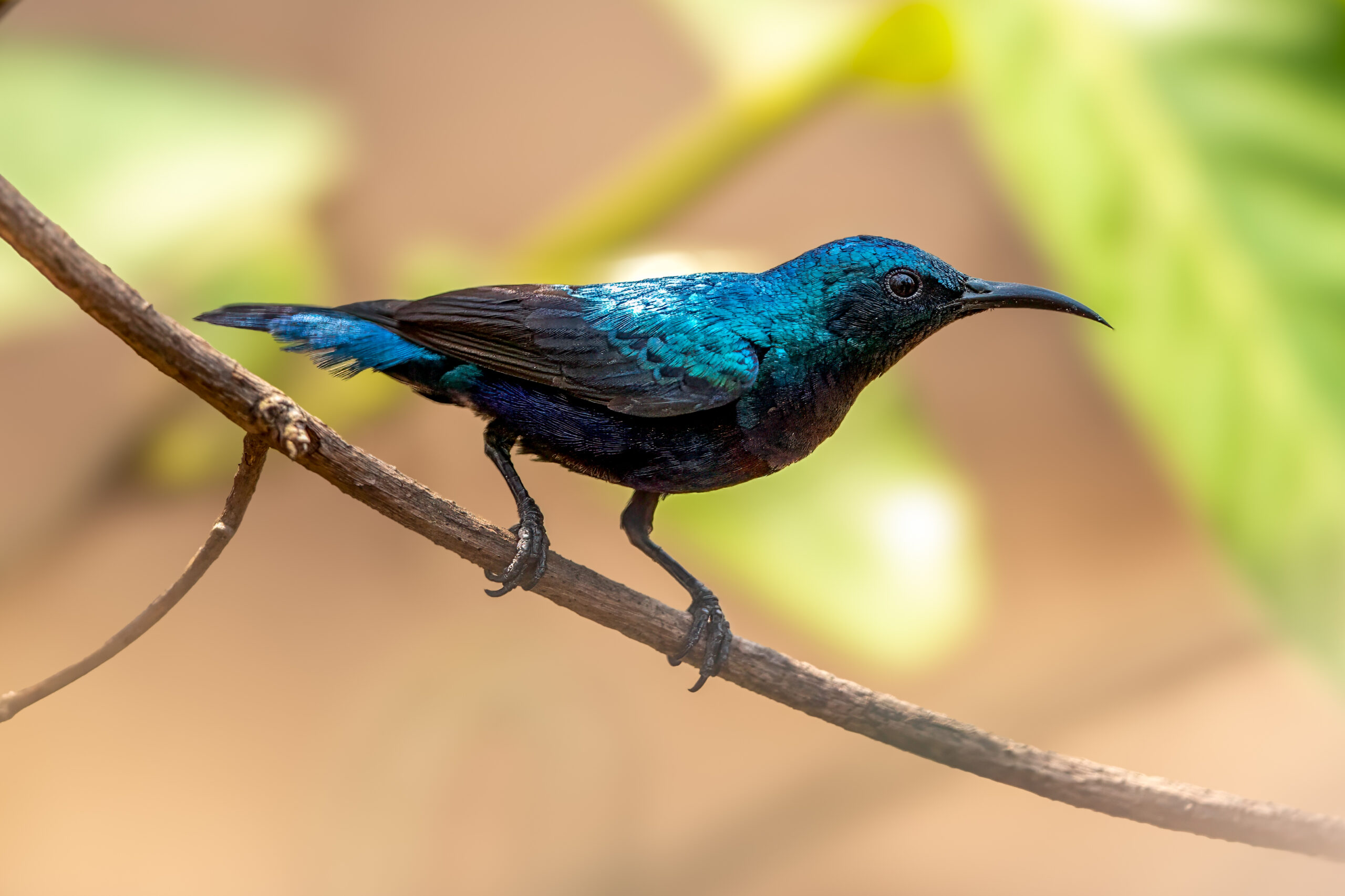Purple-banded Sunbird
(Cinnyris bifasciatus)
Description
The purple-banded sunbird (Cinnyris bifasciatus) is a small, vibrantly colored bird with a patchy distribution in sub-Saharan Africa, predominantly south of the equator. This species is notable for its striking plumage. Males typically exhibit iridescent green heads and upper back, a blue-purple band above a red-purple band across the chest, and black lower back and underparts. Females are generally duller with olive-green upperparts and greyish underbellies. They measure about 9-12 cm (3.5-4.7 in) in length. It is very similar to the Marico sunbird (Cinnyris mariquensis), which is larger, have a broader red-purple band, and a longer and slightly more slender bill.
Diet & habitat
The purple-banded sunbird primarily inhabits open woodlands, coastal scrubs, and gardens. They are known to be nectar feeders, using their long, curved beaks to extract nectar from flowers. In addition to nectar, they consume small insects and spiders, which they often catch in flight. Their feeding behavior involves hovering like a hummingbird while sipping nectar, a skill that requires significant energy.
Nesting
The breeding season of the purple-banded sunbird varies with geographical location, but it generally occurs during the rainy season to coincide with the abundance of nectar. They are monogamous during the breeding season. The female builds a small, cup-shaped nest suspended from a branch in a tree or shrub. The incubation period lasts about two weeks, and the fledgling period extends for another two weeks. During this time, both parents are involved in feeding and protecting the young.
Status
The purple-banded sunbird is found in many locations across sub-Saharan African and the total population is stable. It is listed as least concern on the IUCN Red List.






